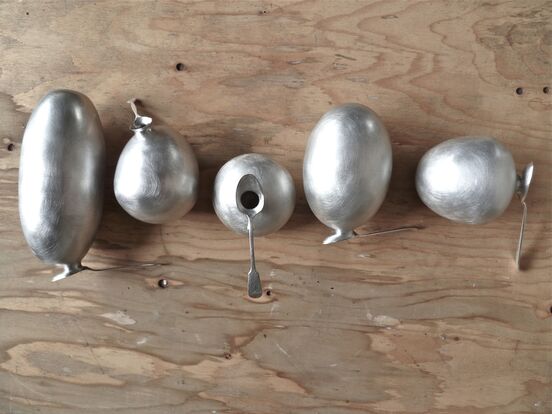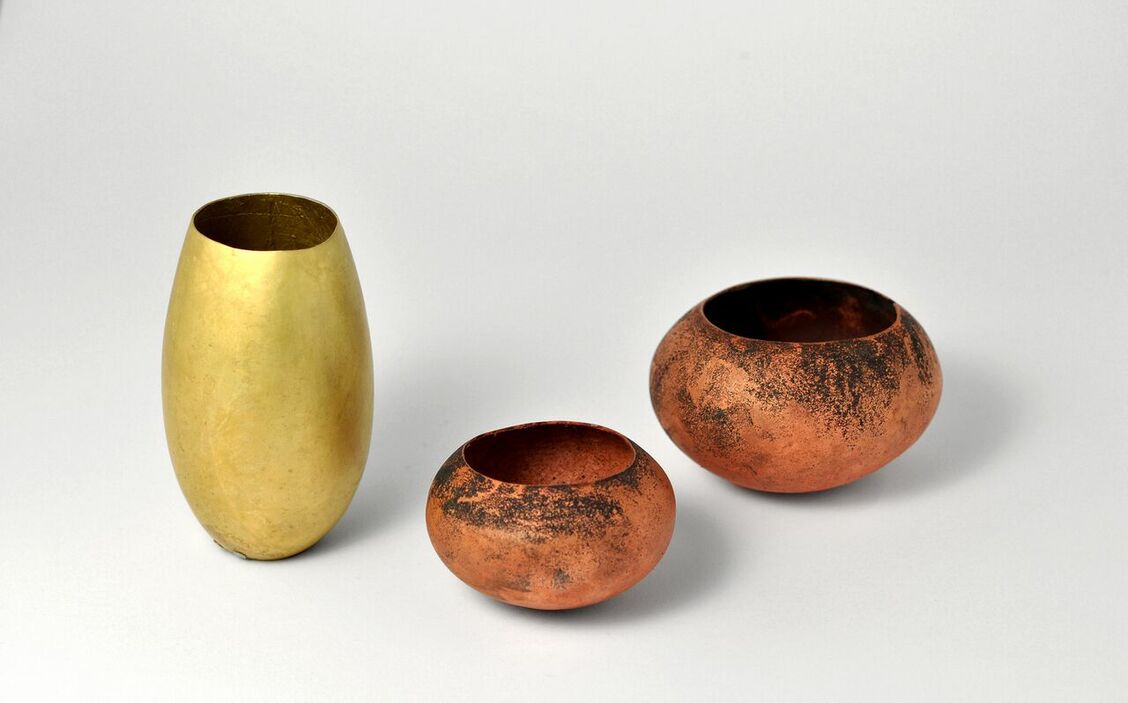-
Author
Kim Paton -
Date
30 Jan 2016
Essay
Fixing the Unbroken: New Making on the Vessel
David Clark, Peter Bauhuis, Vito Bila, 2016
I remember aged nine or ten my mother would occasionally lay out all the silverware on the dining room table. A bundle of rags, a tin of Silvo, my job was to clean them as part of the weekly pursuit of pocket money. For a job, cleaning the silver occurred rarely enough to offer some appeal, the satisfying system of applying the milky Silvo with one cloth and rubbing it off with another to reveal a gleaming surface underneath could be quite thrilling.
The objects of the cleaning were a mystery though. Vessels of different sorts — jugs, bowls and candlestick holders, never used, and slowly tarnishing decoratively on side tables in our lounge and dining room. Or out of sight in cupboards along with the silver cutlery set used once or twice a year at Christmas and Easter. The material quality of the silver definitely met a nine-year-old’s criteria for specialness but as ‘things’ they were fussy, not to be touched (finger marks sped up the blackening) and ultimately useless.
Opening packages and crates at Objectspace in early January—arriving from Christchurch, Melbourne and Germany—the first thing I thought of was the my mother’s table laid out with an assemblage of silverware ready for cleaning. This time though, and to what would have then been my complete delight, the objects had undergone some kind of alchemic, rock n roll treatment. Distorted and dismembered vessels, bowls, jugs and dishes only half there, baring amputations and mutant graftings appeared in the unpacking. With surfaces that show the force, heat and energy of their making. Producing unholy unions between seemingly incompatible elements that render tarnish marks and imperfections entirely irrelevant.
The artists work assembling at Objectspace, David Clarke (UK), Vito Bila (Australia) and Peter Bauhuis (Germany), for Fixing the Unbroken: New making on the Vessel, could be categorised by their shared disruptive power. Anti-authoritarian, funny and also masterful. The artists share a view of metal that seems to simultaneously acknowledge the ancient legacy of where their work has come from while embracing the new and the untested. In a Venn diagram of artist genres they each might share a circumference line with the age-old practices of metalwork and silversmithing, but also conceptual art and contemporary jewellery.
—
Kim Paton

David Clark, Image: courtesy of the artist

Peter Bauhuis, Image: courtesy of the artist
The works express a particular kind of magic, not for what is disguised or made to disappear in the process of their making, but by what is made abundantly clear. The cast, join, fix, seam, weld. Marks made by the hand or the hammer, or the extraordinary heat with which the liquid metal is cast. All of these things become markers and signposts, they speak of the process of the maker and the organic matter of which they are made. Clarke cuts, collages and remasters jugs, vessels and spoons. Taking domestic silverware so utterly recognisable for its expected form and function (sideboards, mantelpieces, stuffy Sunday lunches), he renders them new as caricatures of their former selves, funny and full of life. If you cup one of Peter Bauhius’ small vessels in your hands it feels surprisingly weighty for its eggshell thin form. Silver, gold, deep blacks, rose and red; the surface of the works bear the marks of natural elements (zinc, gold, silver, copper, nickel, bronze) mixing and colliding. The results of this compulsion appear very old and very new. Bila too encourages the oxides and archaic colouring which occur in the casting process to remain on the surface of his work. He makes a feature of the join and a decoration of the weld, and like Clarke he effortlessly adds at the same time as he takes away. Objects are given height or gutted of their internal structure, and contrasting metals sit side by side.
The exhibition collaboration between Bila, Clarke and Bauhuis began as part of Radiant Pavilion in Melbourne in 2015, and with The National, Christchurch, Objectspace brings it to New Zealand in an expanded form. The result is an international survey of contemporary silversmith practice arguably at the margins — the leading edges, where work is made in the murky conditions of the unknown and the experimental. The outcome relies on the force and fearlessness of the relationship between the material—an ancient, volatile and elemental thing—and the maker.
—
Kim Paton

Vito Bila, Image: courtesy of the artist